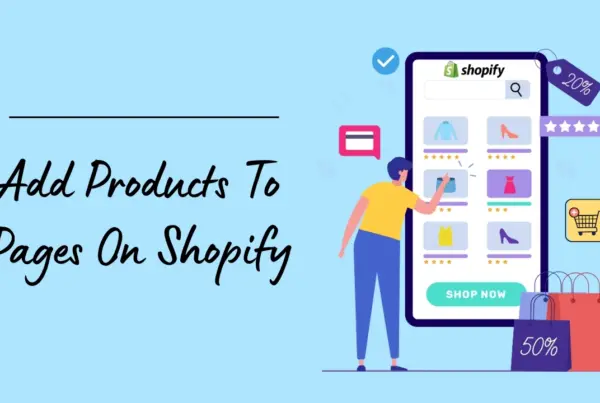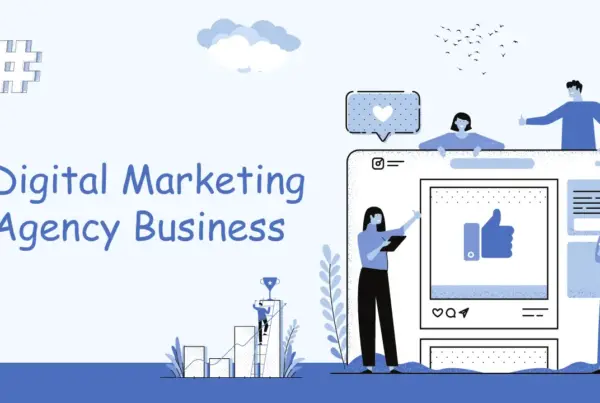In the dynamic digital business world, freelancing has emerged as a game-changer. Its marketplace is an astonishing field where both clients and workers build a business relationship in terms of adequate skills, time duration, and appropriate price.
According to Statista, there were an estimated 57.3 million freelancing workers in the US alone in 2017, which is expected to grow to 90.1 million in 2028. And it would be safe to say that the US economy currently contributes more than $1.4 trillion.
Besides, Website Planet states that over 52% of Generation Z (age of 18 to 22) opt for the freelancing route.
So it is easy to understand how the number of freelance workers is increasing day by day. Hence, starting a new freelance marketplace business can definitely be a profitable venture.
But before proceeding on how to start a freelance marketplace business, it would be beneficial to know what a freelance marketplace is, how it works, and its benefits, first.
Table of Contents
Definition of Freelance Marketplace
A freelance marketplace is a business platform where both employers and employees meet to solve remote projects on a fixed time and a refined monetary scale, in general.
Broadly speaking, these marketplace platforms are dynamic digital hubs that are bustling with activity and where a wide range of services and talents cater to the needs of individuals and businesses alike.
These freelance platforms act as evaluative junctions, uniting clients with seasoned freelancers and stimulating mutual benefit and growth.
These marketplaces stand out from each other for their unique, broad framework, which streamlines the whole procedure.
So, in a word, it is a digital nexus marketplace platform where individuals and businesses looking for certain services connect with expert freelancers ready to succeed in the necessity.
Besides, these freelance platforms can simplify project management with ease, ensure secure payment transactions, and improve communication channels. So that the collaboration with one another remains seamless and efficient.
However, these platforms serve an extensive range of services, including but not limited to content creation, video production, animation, graphic design, business consulting, digital marketing, legal service, translation, writing, IT and software development, and many more.
How It Works
Basically, freelancers start by creating elaborate profiles, displaying their skills, past experience, and portfolios. Clients, on the other hand, post projects sketching out their distinctive demands, including budgets and timelines.
After that, freelancers reply by submitting appropriate proposals describing their methods and pricing. Then, clients review the proposals and select the freelancer that best aligns with their project requirements.
Freelance Marketplace Business Models
Freelance marketplaces have always adopted different business models, every single one with an unparalleled perspective on profitability:
Commission-Based:
Commission-based mainly refers to a unique model that takes a service cost away from the payment paid by the clientele to the freelancer.
Subscription-Based:
Subscription-based means that freelancers pay a constant price for access to work listings and various features.
Advertising Model:
The platform mainly generates revenue by demonstrating targeted ads to both freelancers and clients.
Freemium Model:
Freelancers can use the basic services for free, but if they want, they can buy and use premium features. They can use, for example, advanced project bidding abilities or increased profile visibility.
Project listing Cost:
The clientele are bound to pay a price to post their proposals on the platform.
Enterprise Subscriptions:
Solutions tailored to large organizations with various eye-catching premium features and support are offered for a fixed subscription fee.
Affiliate Marketing:
This outstanding marketplace earns commission by partnering with other services or products and referring clients or freelancers to these external offerings.
Technically, every distinct model offers different unique benefits and caters to diverse types of users. By which the various ecosystems of freelance platforms are contributed.
Benefits of Digital Freelance Marketplaces
Digital freelance platforms propose noticeable benefits to every party involved (platform owners, clients, and freelancers). These advantages build a symbiotic ecosystem that propels the success and admiration of such marketplaces.
For Freelancers:
The following are the benefits for freelancers:
No initial cost:
Starting with these types of marketplaces are free, providing a low barrier to access.
Competitive rates:
This marketplace allows freelancers to charge legitimate rates for their prowess and competence.
Efficient job search:
The platform’s advanced filtering tools make it easy to find relevant projects.
Flexibility:
One of the best advantages of these platforms is the freedom to choose. It means freelancers are eligible to decide how, when, and where they complete the task.
Payment protection:
Payment security is one of the top advantages of all these marketplaces, especially for freelancers. These marketplaces secure the compensation for freelancers for their tasks.
Time-tracking tools:
It’s very convenient and practical and helps freelancers manage their working hours effectively.
Talent recognition:
These platforms offer badges and recognition systems so that top performers can be highlighted.
Community support:
If needed, these platforms permit access to a supportive network. It means that when freelancers need help they can communicate with other fellow freelancers and resources.
For Clients:
Below are the benefits for clients:
Diverse services range:
A massive library of services is available under these types of marketplace platforms
Global talent pool:
Clients can easily access skilled professionals globally by eliminating geographical limitations.
Cost-effectiveness:
Basically, freelancers repeatedly provide more competitive rates than customary corporate subcontractors.
Scalable workforce:
One of the top advantages of this type of platform for clients is the scalable workforce. The platform empowers the scale of the workforce to match project demands.
Secure transactions:
Patform’s trustworthy payment systems secure client funds, which is a classy and helpful benefit.
For Platform Owners:
Now you can see some benefits an owner or founder can get from this type of marketplace:
Revenue from commissions:
These platforms are the most beneficial models where they earn a fair revenue from every transaction.
Additional income streams:
These marketplaces also earn revenue through targeted advertising and premium features.
Scalability:
As the traffic on the platform increases, the marketplace can develop without any ancillary cost.
Global reach:
This style of marketplace is eligible to attract freelancers and clients globally faster.
Adaptability:
These outstanding platforms are developed in a way that can easily adopt new services and market trends.
Low overhead costs:
The fun thing as an intermediary is that these marketplaces need no shipping, production, or physical inventory.
It is safe to say that such platforms are indeed beneficial in nature, which makes them an attractive proposition for entrepreneurs, clients, and freelancers alike.
How to Start a Freelance Marketplace Business
In a nutshell, building a freelance marketplace is all about innovative thinking, hard work, and strategy mixed with the appropriate software development methodology. So, let’s begin how to start a freelance marketplace business:
Method 01: Choose Your Niche
It can be said that niche identification is a complex task, like extracting valuable resources from the bottom of the vast market ocean. You are going deep into the ocean floor to find that pleasant spot where demand can fill a supply gap. It’s not just about stuffing a void; it’s about becoming a complementary resource in a particular realm.
You can think of a platform, for example, like 99designs; how did it become synonymous with graphic design? Basically, the main goal here was to enlighten knowledge and skills, perhaps sharing insights via e-books or webinars.
Now, imagine a new concept like a service exchange market. It is a place where skills are traded on criteria, not just paid. In essence, it creates a unique sense of community vibe.
Method 02: Determine Your Business Model
Now opt for your business model, which will determine how your platform will drive revenue. It can be any path, for example, a subscription service, a commission-based model, or an entirely novel one. Essentially, this step caters to your target audience along with ensuring the stability and growth of the platform.
Method 03: Select Core MVP Features
In this step, it’s time to think about producing an MVP (Minimum Viable Product) as the foundation for your freelancing marketplace. Start with a gentle registration process, then make up an elaborate user profile.
It would be safe to say that this stage covers all the essentials. For example, a portfolio segment to display their work, a robust rating system, and efficient job listing with an intuitive bidding mechanism.
So, what features does an MVP require?
Registration Flows (Freelancers and Companies)
Run with a clean and simple page that assists visitors in spotting themselves as freelancers or clients. Produce a brief registration form starting with a name, address, email, and powerful password. Also, implement Google or Facebook sign-in options.
Advanced User Profiles
Once the basic registration is finished, take freelancers to create their profile creation. Here, let them fill in their bio, skills, education, expertise, and many more. It will be best to convince them to upload an image to complete their account successfully.
Skills
It is paramount to list their freelancing skills and what they offer or, more specifically, identify their areas of expertise. This info is vital to help freelancers to find their relevant jobs. It will also be best if you implement a tagging system or dropdown menu.
Portfolio
This is an essential category for freelancers where they can showcase their past work to potential clients. A portfolio includes examples of projects they have done previously, links to websites they’ve worked on, or any other relevant materials. It will be ultra-effective if freelancers can be provided with the ability to upload files in a predefined size and type quickly.
Project Management Tools
Besides real-time communication, freelance marketplaces offer project tracking, file sharing, and notification systems. So, it makes sense to be ready for compatible integration with accepted management tools, for instance, Asana, Slack, or Trello.
Ratings and Reviews
Yet, another essential category is ratings and reviews because it proves the professional credibility of the freelancers and the quality of the work. This section demonstrates, for instance, the number of projects completed, descriptive reviews, satisfaction rate, and many more.
Simply put, this segment validates a freelancer’s skills, builds trust with potential clients, and establishes a reputable online presence in the market.
Bidding Mechanism
On these platforms, clients post jobs, and freelancers submit bids by describing their skills, experience, and other terms for finishing the job. Then, clients evaluate their (freelancers) proposals before making a decision. This entire bidding procedure creates a competitive environment where every single one has an equal opportunity.
Advanced Search
After that, a mandatory or most important step is to insert a magnificent search and filtering mechanism. It will include but not be limited to job category, client history, skill level, budget range, and many more. It would also be a good idea to consider implementing the proposed job functions and saved searches.
Job Listing
It is vital that job feeds are updated in real time based on freelancers’ profiles and preferences. This keeps them abreast of the latest relevant projects on the one hand and opens up an avenue of income on the other.
Messaging
A channel within the platform is essential for real-time communication between freelancers and clients. Through this, they can clarify task requirements, negotiate terms, discuss project details, etc.
Moreover, its user-friendliness functionality can contribute to freelancer and client satisfaction and loyalty. And besides, it can reduce the risk of contact elsewhere.
Payments and Invoicing
Basically, these tools are wrapped with the financial side of collaboration between clients and freelancers. Especially ensuring safe, reliable, and transparent transactions between the two.
Mainly, the payment procedure secures the compensation of freelancers who will receive it on time. On the other hand, invoices provide clear and authentic documentation, which enables a smooth exchange between clients and freelancers.
Method 04: A Full-Cycle Product Development Process
You are now in the dense of product development which means you have received your desired MVP feedback. So, it’s time to clarify and expand.
This stage is about setting easy to understand desired results, prioritizing features, and ensuring the platform is functional, secure, and compliant. Or more precisely, a balancing act between user needs, technical excellence, and innovation.
Method 05:
At last, the launch, but frankly, it’s way more than just clicking the “GO” button. This stage requires engaging users, strategic marketing, and closely monitoring the platform’s performance. Moreover, it’s an uninterrupted action of studying, tweaking, and improving.
Once your marketplace gets the desired traction and is ready to scale up, ensure your team and infrastructure can lead the growth. In addition to customers, it would be best if you consider freelancers to advertise via your platform.
Final Though:
Starting a freelance marketplace business requires careful planning and implementation. By following these detailed steps, you can build a successful platform that connects talented freelancers with clients, fostering a thriving freelance community.
Nevertheless, after the pandemic of CORONAVIRUS, it is high time to enter the market. Because the freelance industry continues to evolve and there are many pathways to monetize your freelance platform.




